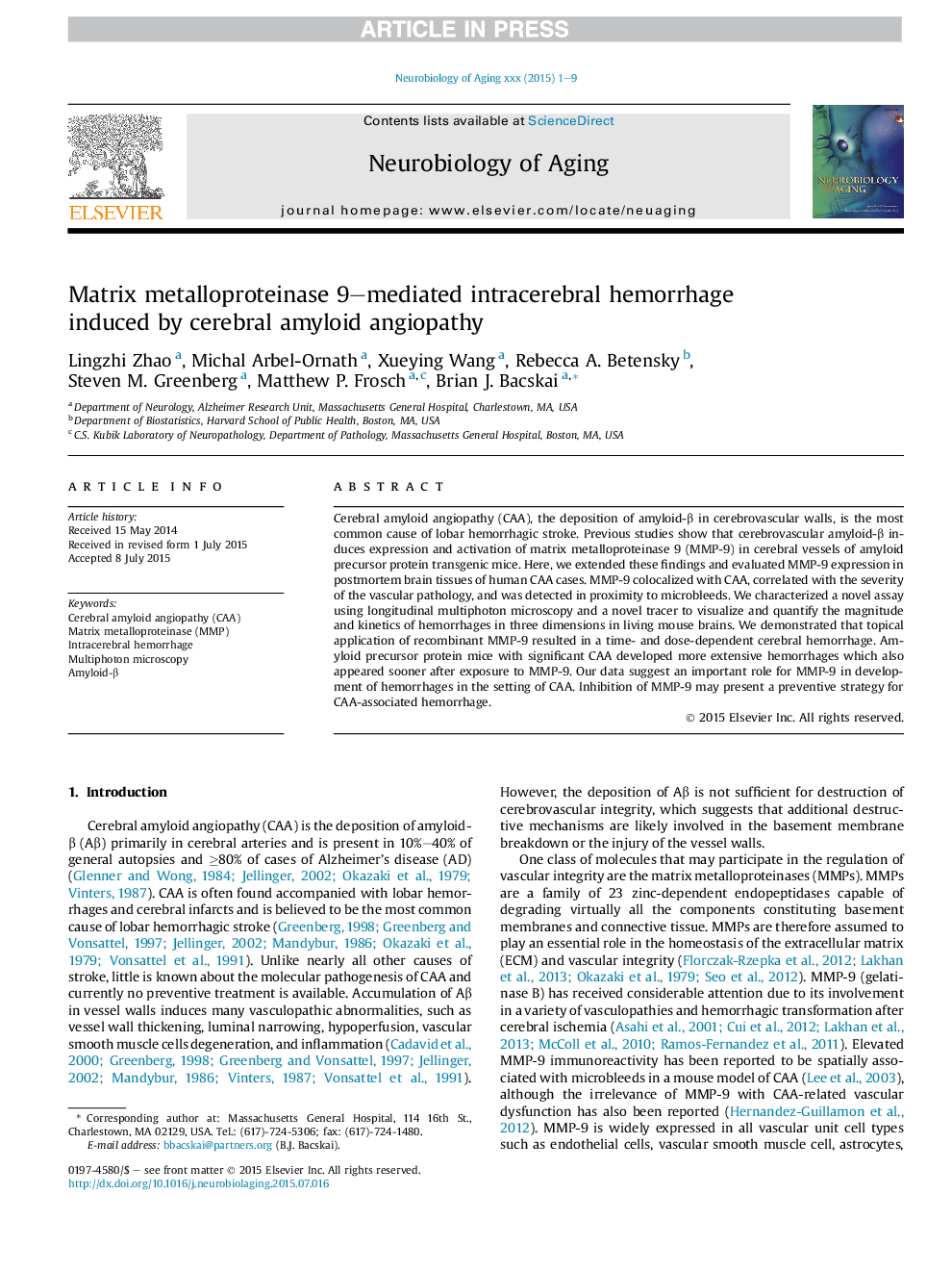| Article ID | Journal | Published Year | Pages | File Type |
|---|---|---|---|---|
| 6803768 | Neurobiology of Aging | 2015 | 9 Pages |
Abstract
Cerebral amyloid angiopathy (CAA), the deposition of amyloid-β in cerebrovascular walls, is the most common cause of lobar hemorrhagic stroke. Previous studies show that cerebrovascular amyloid-β induces expression and activation of matrix metalloproteinase 9 (MMP-9) in cerebral vessels of amyloid precursor protein transgenic mice. Here, we extended these findings and evaluated MMP-9 expression in postmortem brain tissues of human CAA cases. MMP-9 colocalized with CAA, correlated with the severity of the vascular pathology, and was detected in proximity to microbleeds. We characterized a novel assay using longitudinal multiphoton microscopy and a novel tracer to visualize and quantify the magnitude and kinetics of hemorrhages in three dimensions in living mouse brains. We demonstrated that topical application of recombinant MMP-9 resulted in a time- and dose-dependent cerebral hemorrhage. Amyloid precursor protein mice with significant CAA developed more extensive hemorrhages which also appeared sooner after exposure to MMP-9. Our data suggest an important role for MMP-9 in development of hemorrhages in the setting of CAA. Inhibition of MMP-9 may present a preventive strategy for CAA-associated hemorrhage.
Keywords
Related Topics
Life Sciences
Biochemistry, Genetics and Molecular Biology
Ageing
Authors
Lingzhi Zhao, Michal Arbel-Ornath, Xueying Wang, Rebecca A. Betensky, Steven M. Greenberg, Matthew P. Frosch, Brian J. Bacskai,
